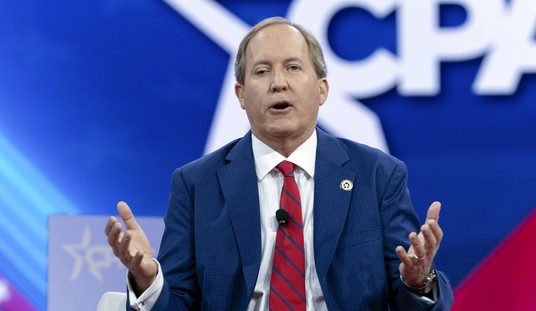MADISON — Gov. Tony Evers has assumed the “CYA” position following the debacle that has been his administration’s distribution of the COVID-19 vaccines.
While the Democrat is feverishly attempting to blame the Trump administration, legislative Republicans, pharmacies and anyone else he can scapegoat, this fiasco is all on the governor.
Go back one month ago, when Evers dismissed any notion of legislative oversight of COVID-19 relief spending and vaccine distribution. Such a check on his executive authority would be cumbersome and time-consuming, he told the press gaggle. He eschewed any help.
“Clearly, if you think about over 100 people in the Capitol figuring out who gets the vaccine first or second and so on, that doesn’t even pass the smell test,” the governor said at the time.
One month later, Evers is taking heat for a botched vaccine deployment effort, with distribution badly lagging many of Wisconsin’s Midwest neighbors and much of the country. And the state’s most vulnerable populations are weeks away from receiving their first round of life-saving COVID-19 vaccinations.
The governor, of course, blames others. Evers joined seven other Democrat governors last week in a scathing letter criticizing the Trump administration for holding back COVID-19 vaccines.
“The failure to distribute these doses to states who request them is unconscionable and unacceptable,” the letter states. “We demand that the federal government begin distributing these reserved doses to states immediately.”
But there are some basic flaws in the governors’ recriminations.
As of Monday, a total of 420,200 doses had been allocated to Wisconsin from the federal government, a number based on state population, according to the state Department of Health Services’ dashboard. Of that, 266,675 vaccines had been shipped to Badger State vaccinating locations, with “(s)ome still in transit.” The report shows 151,518 doses had been administered. That means a good portion of the shipped vaccines were in Wisconsin yet to be given. That’s not a federal government problem. In large part, that’s a state planning and communication problem.
Recommended
U.S. Rep. Bryan Steil (R-Janesville) called Evers’ letter a “pathetic excuse for a response.” He pointed to CDC data showing Wisconsin ranked 40th out of all states and the District of Columbia for vaccines administered per 100,000 people. Wisconsin last week ranked 10th out of 12 states in percentage of population vaccinated — a slim 1.2 percent.
“These bureaucratic answers display a stunning lack of urgency in getting people the life-saving help they need. People in Wisconsin are dying every day, workers are out of work, small businesses are shuttered, and kids are out of school,” said the congressman, who recently sought answers from Evers in a joint letter with U.S. Sen. Tammy Baldwin, a Madison Democrat.
The lawmakers asked the administration to respond to several questions. They did, with bureaucratic answers.
“In order to have a successful vaccine program, we must have public demand for vaccine, adequate vaccine supply, and a system to distribute and administer the vaccine. Much of our work to date has focused on the latter,” the administration said in response to questions about the plan to distribute and administer the vaccine.
Safe to say there is plenty of public demand for the vaccine.
“Building upon the Department of Health Services (DHS) Immunization Program expertise, and consistent with the other lines of effort in our response, we created a COVID-19 Vaccination Task Force with representatives from DHS, Wisconsin Emergency Management (WEM), and the Wisconsin National Guard (WING),” the administration added.
Still, the delays and foulups go on.
State health officials last week confirmed residents of Wisconsin’s assisted living facilities won’t begin receiving the vaccine until the end of this month, weeks later than many other states. The frustration is growing among the assisted-living community and their families.
“We’d like to know what’s going on with our state,” Jim Tarantino, CEO of Capri Communities, a group of 18 assisted living and memory care facilities across southeastern Wisconsin, told the Milwaukee Journal Sentinel. He said he’s frustrated by the lack of communication from the state.
He’s not alone.
Immunization expert Ann Lewandowski, who worked in the field during the Swine Flu pandemic of 2009, said there’s plenty of blame to go around, but one of the problems has been the lack of information at the state level.
“The data elements are not clear,” she said in an interview with Empower Wisconsin last week. Lewandowski, program manager for the Southern Wisconsin Immunization Consortium, a Rural Health Cooperative Program, said she was not speaking on behalf of the consortium or the program, but as someone with experience in pandemic response. She said she’s concerned that vulnerable populations in rural areas of the state could be left out as larger metropolitan areas receive the greater share of vaccines.
As for who gets the vaccine first, Empower Wisconsin has learned from multiple sources that some individuals who are not considered to be in the most vulnerable categories are being allowed to “jump the vaccination line.” In some cases, health care support services employees, like those in IT who work remotely, have received first and second rounds of inoculations.
The failures mount for Evers and his overmatched administration.
“We’ve seen Governor Evers’ incompetence in Kenosha, at the Union Grove Veterans Home, and in allocating unemployment benefits to Wisconsin workers,” Steil said.
“If Governor Evers cannot figure out how to distribute the vaccine to those who need it, he should step aside and let someone who can lead this effort do it.”

























Join the conversation as a VIP Member